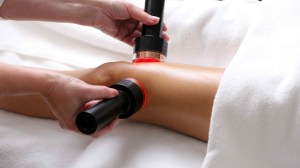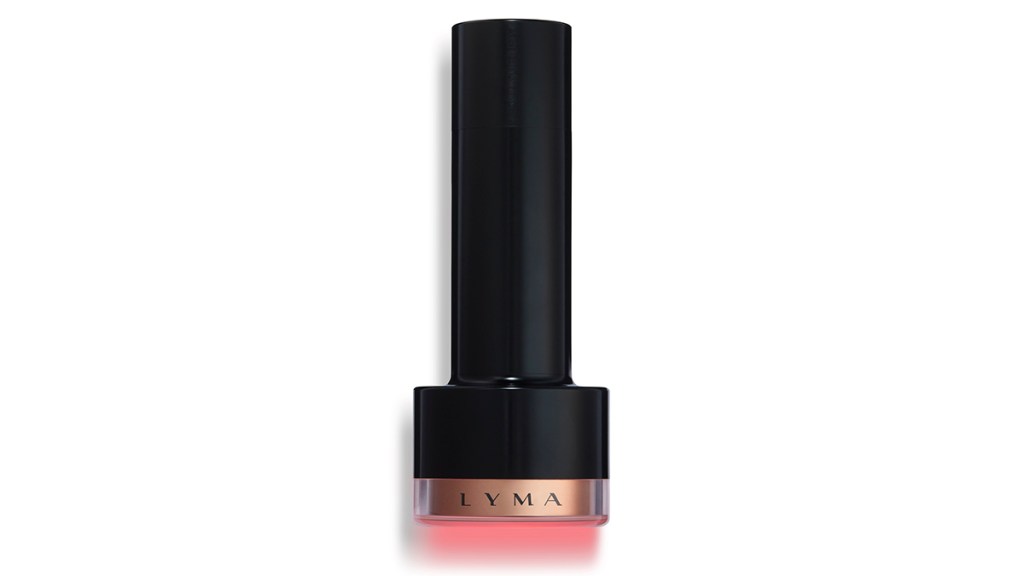Lucy Goff knew from the time she started working on the first Lyma Laser—an award-winning, highly coveted device that improves the appearance of wrinkles, dark spots, skin texture, and even eases muscle soreness—that she’d eventually bring an even bigger version of the at-home device to market. What she didn’t realize is that the initial iteration, which launched for $2,695 in 2020, would become so beloved by skin care professionals and aestheticians.
“We re-engineered a huge, floor-standing, low-level laser hospital machine into a little portable device at exactly the same power, with a bigger treatment lens,” she said in a recent interview. “We’re empowering people to change their skin, wherever they are, whoever they are, and whatever skin they have.”
Last year, she launched the bigger version—called the Lyma Pro, which doubled the size of the original’s laser aperture—to rave reviews. And this week, after slogging through the FDA clearance process, Goff and her team were finally able to start selling the Pro units in the United States.
The Lyma Pro, which will set you back $5,995, has three times its older sibling’s cold laser power. But because its treatment lens is bigger, you can cover more of your skin’s surface area, and you only need to use it for three minutes per area of your face or body.
The reason the device is so beneficial for such a wide range of issues is because of its specific wavelength. It uses 808 nm near-infrared light, a cold laser dosage that encourages your skin to create more collagen without generating significant heat. Goff bills it as the only device that promotes such benefits without causing damage to the skin.
“All other beauty devices in the entire industry provide some kind of micro damage to the skin, and then, the body creates collagen throughout the healing process,” she said. “It’s so revolutionary because when you rely on the stress-damage approach to creating collagen, you are creating an inferior collagen than what your body naturally produces.”
But it also means that the laser can be used by virtually any skin tone, including people with dark, melanin-rich skin—the kind to which other laser devices can cause serious damage and scarring. It also means you can incorporate it into your routine even if you’re already using retinol, or if you have Botox or fillers.

In addition to facial wrinkles and dark spots, the Lyma Pro can be used to address muscle soreness.
Lyma
I’ve been using the device every night for about two weeks now, after cleansing and applying an essence, but before moisturizing. I’m already starting to see results—specifically, fading hyperpigmentation on my cheeks and forehead. I’ve even tried it on my right knee, which has recently begun experiencing some middle-aged joint pain. It feels like running a massive flashlight over your face, and the process has a slightly meditative quality that adds a moment of zen to my evening skin care routine.
But the device is quite heavy, despite Goff and company’s hard work to mitigate its heft. On nights when exhaustion has tempted me to simplify my routine to mere cleansing and moisturizing, I’ve almost skipped the laser just because of its size. And then, Goff’s advice rings out in my memory.
“You need to use it every day for the first eight weeks,” she said. “If you take good before and afters, in 30 days, you’ll go ‘Wow.’” And based on what I’ve already seen, I have no doubts her prediction will come true.
Authors
-

Justin Fenner
Lifestyle Director
Justin Fenner is Robb Report’s lifestyle director. He’s been covering style, grooming, and watches for over a decade, traveling across the world to examine how these topics intersect with the broader…
Credit: robbreport.com










